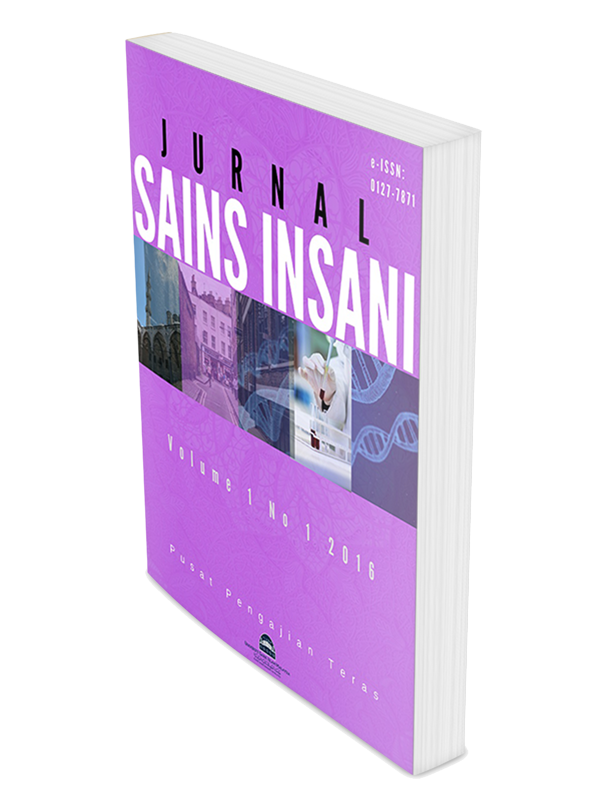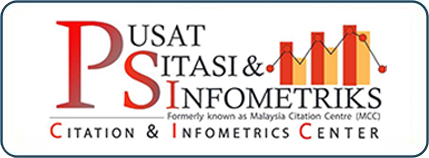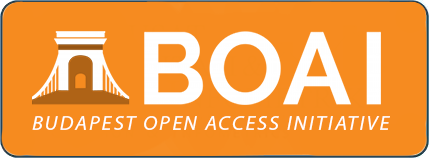Teaching Multimodal Texts in an ESP Class Using Interacty and Padlet
Pengajaran Teks Multimodal dalam Kelas ESP Menggunakan Interacty dan Padlet
DOI:
https://doi.org/10.33102/sainsinsani.vol9no2.634Keywords:
multimodal texts, ESP, Interacty, PadletAbstract
Abstract: The utilization of multimodal texts and interactive technology has gained significant popularity. However, the existing research on multimodal texts for English for Specific Purposes (ESP) is less comprehensive. Therefore, the current study explores the potential of Interacty and Padlet to improve ESP teaching and learning in a virtual setting, their implementation in the classroom, and students’ outcomes following the application of the two apps. This study employed a descriptive qualitative approach through participant observation to collect data. Thematic Analysis was applied to analyse the fieldnotes and the accompanying transcribed data. The implementation of Interacty and Padlet in ESP courses has proven to be adaptable and effective tools to enhance the language learning through various interactive formats, quizzes, and games to promote meaningful activities. The overall success of the implementation suggests that the use of these platforms has the potential to enhance engagement, motivation, and comprehension in ESP classrooms while adding an element of fun to the learning process. This study adds to the existing research on online teaching by offering findings regarding the use of Interacty and Padlet in ESP which enables the instructor to promote students’ comprehension, meaningful learning, and joyful activities.
Abstrak: Penggunaan teks multimodal dan teknologi interaktif telah mendapat populariti yang ketara. Walau bagaimanapun, penyelidikan sedia ada mengenai teks multimodal untuk English for Specific Purposes (ESP) adalah kurang menyeluruh. Oleh itu, kajian semasa meneroka potensi Interacty dan Padlet untuk menambah baik pengajaran dan pembelajaran ESP dalam persekitaran maya, pelaksanaannya di dalam bilik darjah, dan hasil pelajar berikutan penggunaan kedua-dua aplikasi tersebut. Kajian ini menggunakan pendekatan kualitatif deskriptif melalui pemerhatian peserta untuk mengumpul data. Analisis Tematik telah digunakan untuk menganalisis nota lapangan dan data transkripsi yang disertakan. Pelaksanaan Interacty dan Padlet dalam kursus ESP telah terbukti sebagai alat yang boleh disesuaikan dan berkesan untuk meningkatkan pembelajaran bahasa melalui pelbagai format interaktif, kuiz, dan permainan untuk mempromosikan aktiviti yang bermakna. Kejayaan keseluruhan pelaksanaan menunjukkan bahawa penggunaan platform ini berpotensi untuk meningkatkan penglibatan, motivasi dan kefahaman dalam bilik darjah ESP sambil menambah unsur keseronokan kepada proses pembelajaran. Kajian ini menambah kepada penyelidikan sedia ada tentang pengajaran dalam talian dengan menawarkan penemuan berkenaan penggunaan Interacty dan Padlet dalam ESP yang membolehkan pengajar mempromosikan kefahaman pelajar, pembelajaran bermakna dan aktiviti yang menggembirakan.
Downloads
References
Abutalebi, J., & Clahsen, H. (2022, April 18). Digital tools for learning new languages: Benefits and limitations. Language and Cognition. https://doi.org/10.1017/s1366728922000268
Al Aqad, M. H., Al-Saggaf, M. A., & Muthmainnah, M. (2021, November 22). The impact of audio-visual aids on learning english among MSU third-year students. English Franca: Academic Journal of English Language and Education, 5(2), 201. https://doi.org/10.29240/ef.v5i2.3329
Ali, A. (2021). Using padlet as a pedagogical tool. Journal of Learning Development in Higher Education, 22 (special issue), 1-5. doi: 10.47408/jldhe.vi22.799.
Alrayah, H. (2018, March 11). The effectiveness of cooperative learning activities in enhancing efl learners’ fluency. English Language Teaching, 11(4), 21. https://doi.org/10.5539/elt.v11n4p21
Armadi, S. (2017, January 14). Review efektifitas model cooperative learning dalam pembelajaran bahasa. Cendekia: Journal of Education and Teaching, 11(1), 117. https://doi.org/10.30957/cendekia.v11i1.256
Asmali, M. (2018). Integrating technology into ESP classes: Use of student response system in English for specific purposes instruction. Teaching English with Technology, 18(3), 86-104.
Atifnigar, H., & Zaheer, Z. U. R. (2020, February 25). Exploring effects of cooperative learning among EFL learners in Laghman University of Afghanistan. International Journal of Humanities and Social Science, 7(2), 13–20. https://doi.org/10.14445/23942703/ijhss-v7i2p103
Bagila, S., Kok, A., Zhumabaeva, A., Suleimenova, Z., Riskulbekova, A., & Uaidullakyzy, E. (2019, November 29). Teaching primary school pupils through audio-visual means. International Journal of Emerging Technologies in Learning (IJET), 14(22), 122. https://doi.org/10.3991/ijet.v14i22.11760
Broughton, E. (2005, May 10). The Bhopal disaster and its aftermath: a review. Environmental Health, 4(6), 1-6. https://doi.org/10.1186/1476-069x-4-6
Creswell, J. W., & Creswell, D. J. (2018). Reserach Design - Qualitative, Quantitative, aand Mixed Methods Approach (Fifth). Sage Publication, Inc.
Curry, N. (2022, April 13). Opportunities in Digital Language Learning. Cambridge University Press. https://www.cambridge.org/elt/blog/2021/03/03/opportunities-digital-distance-language-learning/
Dianati, S., Nguyen, M., Dao, P., Iwashita, N., & Vasquez, C. (2020, December 1). Student perceptions of technological tools for flipped instruction: The case of Padlet, Kahoot! and Cirrus. Journal of University Teaching and Learning Practice, 17(5), 52–66. https://doi.org/10.53761/1.17.5.4
Davis, M. C., Duryee, L. A., Schilling, A. H., Loar, E. A., & Hammond, H. G. (2020). Examining the impact of multiple practice quiz attempts on student exam performance. Journal of Educators Online, 17(2). https://www.thejeo.com/ archive/2020_17_2/davis_duryee_schilling_loar__hammond.
Deni, A. R. M., & Zainal, Z. I. (2018, October 26). Padlet as an educational tool. Proceedings of the 10th International Conference on Education Technology and Computers. https://doi.org/10.1145/3290511.3290512
Dou, A. Q., Chan, S. H., & Win, M. T. (2023, April 17). Changing visions in ESP development and teaching: Past, present, and future vistas. Frontiers in Psychology, 14. https://doi.org/10.3389/fpsyg.2023.1140659
Dou, A. Q., Chan, S. H., & Win, M. T. (2023, April 17). Changing visions in ESP development and teaching: Past, present, and future vistas. Frontiers in Psychology, 14. https://doi.org/10.3389/fpsyg.2023.1140659
Efendi, M. A. (2021, March 28). The use of pictures as media to improve students’ reading comprehension. Journal of English Teaching, Literature, and Applied Linguistics, 2(2), 84. https://doi.org/10.30587/jetlal.v2i2.2467
Flewitt, R., Price, S., & Korkiakangas, T. (2018, December 28). Multimodality: Methodological explorations. Qualitative Research, 19(1), 3–6. https://doi.org/10.1177/1468794118817414
Girón-García, C., & Gargallo-Camarillas, N. (2020, September 30). Multimodal and perceptual learning styles: Their effect on students’ motivation in a digital environment. The EuroCALL Review, 28(2), 23. https://doi.org/10.4995/eurocall.2020.12758
Glaser, B. G., & Strauss, A. L. (1967). The discovery of grounded theory: Strategies for qualitative research. Aldine Publishing Company.
Huges, C. (2003). Book Review: Disseminating Qualitative Research in Educational Settings. In Theory and Research in Education (Vol. 3, Issue 2). Open University Press. https://doi.org/10.1177/147787850500300209
Hutchinson, T., & Waters, A. (1987, January 29). English for Specific Purposes. https://doi.org/10.1017/cbo9780511733031
Ibrahim, H. H. (2020). Needs analysis as a prerequisite for designing an ESP course for medical students. Open Journal of Modern Linguistics, 10(02), 83–103. https://doi.org/10.4236/ojml.2020.102006
KIRBAŞ, A. (2017, January 1). Effects of cooperative learning method on the development of listening comprehension and listening skills. International Journal of Languages’ Education, 1(Volume 5 Issue 1), 1–17. https://doi.org/10.18298/ijlet.1712
Kress, G. R., Van Leeuwen, T., & Van Leeuwen, D. O. H. A. S. S. T. (1996, January 1). Reading Images. Psychology Press. http://books.google.ie/books?id=vh07i06q-9AC&printsec=frontcover&dq=Kress,+G.,+%26+Van+Leeuwen,+T.+(2006)+Reading+Images:+The+grammar+of+visual+design.+London:+Routledge.&hl=&cd=1&source=gbs_api
Laadem, M., & Mallahi, H. (2019). Multimodal pedagogies in teaching English for specific purposes in higher education: Perceptions, challenges and strategies. International Journal on Studies in Education, 1(1), 33-38.
Lee, Y. J. J. (2019, April 30). Integrating multimodal technologies with VARK strategies for learning and teaching EFL presentation: An investigation into learners’ achievements and perceptions of the learning process. Australian Journal of Applied Linguistics, 2(1), 17–31. https://doi.org/10.29140/ajal.v2n1.118
Li, P., & Jeong, H. (2020, June 19). The social brain of language: grounding second language learning in social interaction. Npj Science of Learning, 5(1). https://doi.org/10.1038/s41539-020-0068-7
Li, P., & Lan, Y. J. (2021, August 13). Digital language learning (DLL): Insights from behavior, cognition, and the brain. Bilingualism: Language and Cognition, 25(3), 361–378. https://doi.org/10.1017/s1366728921000353
Loar, E. A. (2018). Computer self-efficacy revisited. Journal of Instructional Research, 7, 55–59. https://doi.org/10.9743/ JIR.2018.4
Lucas, G., Cao, G., Waltemeyer, S., Mandernach, B. J., & Hammond, H. G. (2021). The value of instructor interactivity in the online classroom. The Journal of Empowering Teaching Excellence, 5(1). https://digitalcommons.usu.edu/jete/vol5/ iss1/3
Maryam, M. A., & Paiman, N. (2022). University English language teachers’ use of digital platforms for online teaching. International Journal of Emerging Technologies in Learning (Online), 17(20), 134-148. doi: https://doi.org/10.3991/ijet.v17i20.31421
Miles, M. B., Huberman, A. M., & Saldaña, J. (2014). Qualitative data analysis: A methods sourcebook (3rd ed.). Sage Publications.
Mills, G. E., & Gay, L. R. (2018). Educational Research Competencies for analysis and application. In Educational Research (Twelfth). Pearson.
Mohamed, O. I., & Alani, N. N. (2022, November 18). English for specific purposes: An overview: Definitions. Characteristics and development. English Language Teaching, 15(12), 28. https://doi.org/10.5539/elt.v15n12p28
Monteiro, V., Carvalho, C., & Santos, N. N. (2021, June 25). Creating a supportive classroom environment through effective feedback: Effects on students’ school identification and behavioral engagement. Frontiers in Education, 6. https://doi.org/10.3389/feduc.2021.661736
Nachimuthu, K. (2018). Innovative teaching learning through web tools. International Journal of Research in Humanities, Arts and Literature, 6(3), 275–280.
Poce, A., Agrusti, F., & Re, M. (2017). Enhancing higher education students’ XXI century skills through co-writing activities in science teaching. Journal of e-Learning and Knowledge Society, 13(1). https://doi.org/10.20368/1971-8829/153.
Rahmati, J., Izadpanah, S., & Shahnavaz, A. (2021, May 13). A meta-analysis on educational technology in English language teaching. Language Testing in Asia, 11(1). https://doi.org/10.1186/s40468-021-00121-w
Schilling, A. H., & Hammond, H. G. (2019). This is how we do it: Getting students to read the textbook. Journal of Instructional Research, 8(2). https://cirt.gcu.edu/jir/documents/2019_v82/this_is_how_we_do_it_getting_students_to_read_the_ textbookpdf?
Sowton, C. (2022, April 14). Creating Safe, Positive Classroom Environments. Cambridge University Press. https://www.cambridge.org/elt/blog/2021/06/16/7-ways-create-safe-positive-classroom-environments-in-challenging-contexts/
Strauss, A., & Corbin, J. (1990). Basics of qualitative research: Grounded theory procedures and techniques. Sage Publications.
Sukiawati, S., & Nurfaidah, S. (2021, August 24). Students’ attitude on the benefits of project-based learning in the multimodal platform. AL LUGHAWIYAAT, 1(2). https://doi.org/10.31332/alg.v1i2.2279
Waltemeyer, S., Hembree, J. R., & Hammond, H. G. (2021). Padlet: The multipurpose web 2.0 Tool. Journal of Instructional Research, 10, 93-99.
Yavuz, O., & Arslan, A. (2018, July 15). Cooperative learning in acquisition of the English language skills. European Journal of Educational Research, 7(3), 591–600. https://doi.org/10.12973/eu-jer.7.3.591
Downloads
Published
How to Cite
Issue
Section
License
Copyright (c) 2024 Arienta Kurniawati, Zuliati Rohmah

This work is licensed under a Creative Commons Attribution 4.0 International License.
1. Author holds the copyright of the article.
2. Jurnal Sains Insani owns the rights to publish the article. The writer may request permission to republish the article from the editor.
3. Jurnal Sains Insani follows the APA (American Psychological Association) style for all in-text citation and list of bibliographies.











